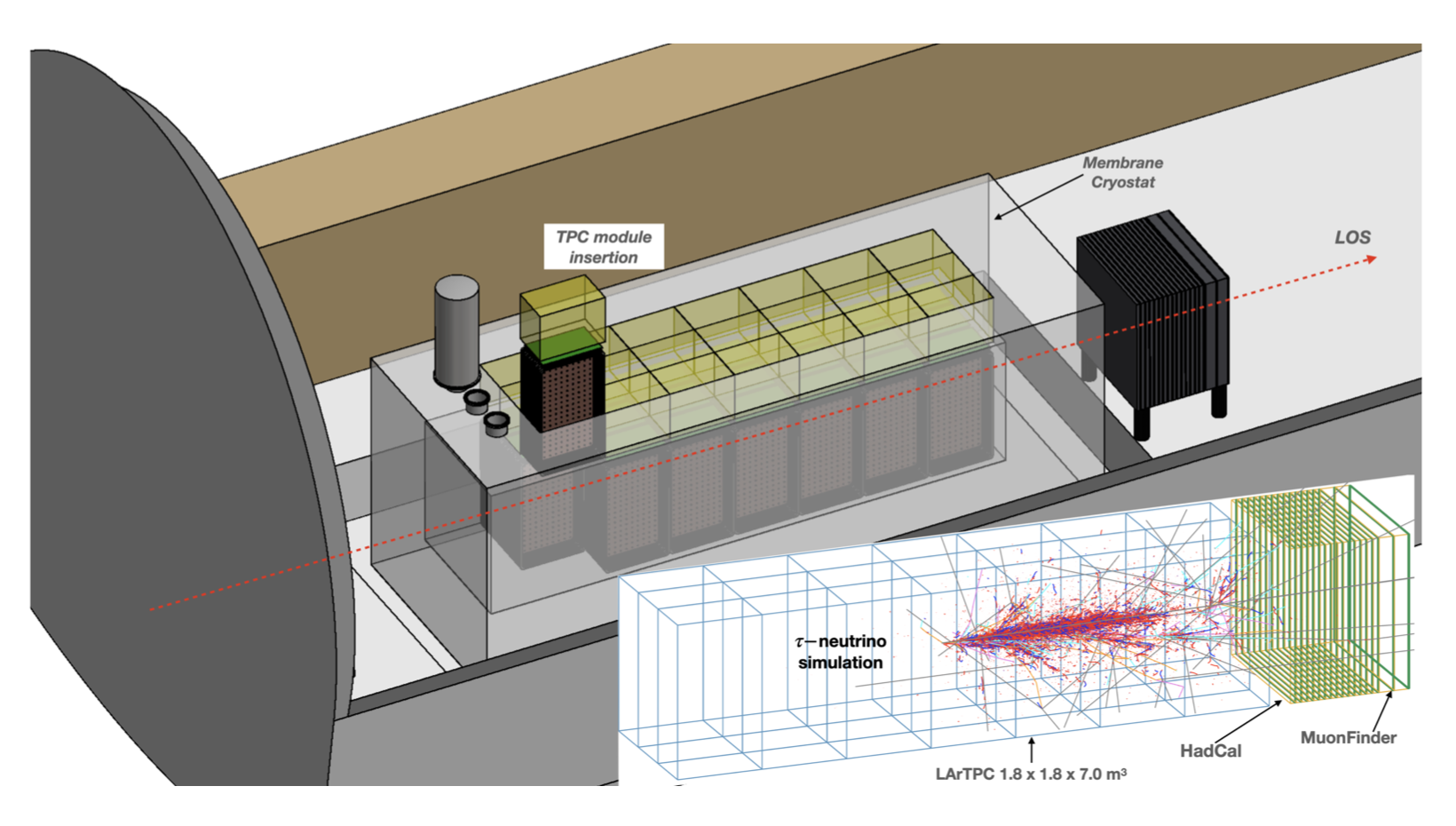A modularized liquid argon time projection detector (FLArE) is under development for the suite of detectors for the FPF. The technical design of such a detector is helped by the considerable investment in liquid noble gas detectors over the last decade (ICARUS, MicroBooNE, SBND, ProtoDUNE, and various components of DUNE). A liquid argon detector offers the possibility to precisely determine particle identification, track angle, and kinetic energy over a large dynamic range, from ∼ 10 MeV to many hundreds of GeV. Such a broad-purpose detector is therefore complementary to other FPF detectors (such as emulsion detectors or magnetic spectrometers) that are more tuned for single-purpose measurements. The liquid argon detector is motivated by the requirements of neutrino detection and light dark matter searches. A key motivation is the detection and measurement of TeV-scale neutrino events from a laboratory-generated, well- characterized source: the LHC. The LHC is the only possible intense terrestrial source of high-energy neutrinos. The data set that will be gathered at FLArE and other far-forward detectors will thus be unique and broadly valuable to particle physics and astrophysics.
The detector is expected to measure millions of neutrino interactions, including tau neutrinos. The detector should have sufficient capability to measure these very high-energy (> 100 GeV) events, so that the cross section for each flavor can be measured. Identification of tau neutrinos with low backgrounds requires detailed simulations and reconstruction studies. As an approximate estimate, we expect to see about 25-50 high-energy neutrino events/ton/fb−1 of collisions. (Note that during the high-luminosity running of the LHC, the beam delivers approximately 1 fb−1 per day.) The majority of this flux will be muon neutrinos, with electron neutrinos forming about 1/5 of the event rate. The tau neutrino rate is expected to be ∼ 0.1 event/ton/fb−1, with a very large uncertainty due to QCD modeling in the forward direction. The high-energy electron and tau neutrino fluxes come from charm meson decays in the forward region, and, therefore, careful measurements of these event types have broad implications for particle physics.
The key requirement for both measurements, neutrinos and light dark matter, is the ability to trigger and collect particles that come from the ATLAS IP and produce an event within the fiducial volume of the detector, in the presence of large muon backgrounds from the high luminosity running of the LHC. The detector must also be able to contain the events and reconstruct the kinematics to identify the neutrino type. Identification of tau neutrinos presents a particular challenge requiring both high spatial and kinematic resolution. In the case of dark matter events, an isolated forward- going electron must be identified and its energy measured. A liquid argon (or noble liquid) time projection chamber provides the opportunity to have sub-millimeter spatial resolution in all three dimensions, along with excellent electromagnetic calorimetry. For excellent energy containment and muon tagging and measurement, the detector will need a magnetized hadron/muon calorimeter downstream of the liquid argon volume.
The FLArE project is divided into three major components: the needed infrastructure in the FPF cavern; the cryostat and cryogenics; and the detector, including all instrumentation, electron- ics, DAQ, and associated software. The costs will be divided between CERN (for the infrastructure), the US collaboration, and the non-US partners. Given that FLArE is roughly the same scale (but with a different detailed design), the recent experience with MicroBooNE and SBND at FNAL is applicable. We anticipate that the US cost estimate, $39-65 M in FY2023 dollars (exclusive of the infrastructure cost), will be kept below the threshold that allows the project to be managed by a US national laboratory with significant organizational experience at CERN and under US-DOE guidance.
The FLArE project will follow guidance and review processes as defined by the US-DOE and CERN along with other significant partners. Currently, two international working groups, the FLArE physics and technical groups, are active with large US participation. If the project is encouraged, these working groups will form a proto-collaboration with constituent bodies for scientific and technical decision-making. A large part of the collaboration function in the next two years will be defining the science and detector scope, working to coordinate with the other elements of the FPF, and obtaining the research related resources from appropriate national funding agencies for a conceptual design and the needed R&D.

